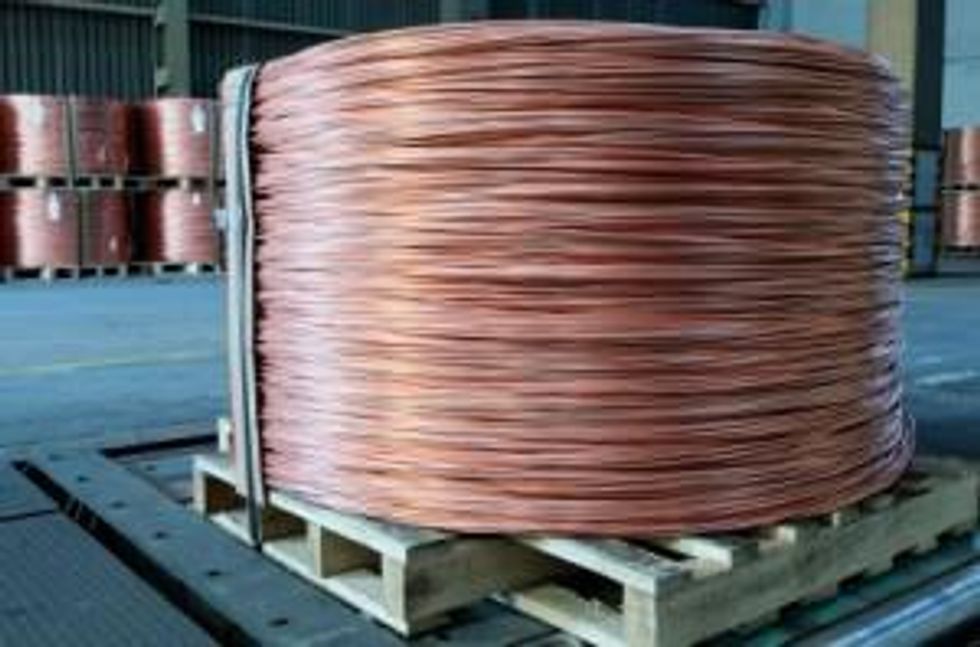- AustraliaNorth AmericaWorld
Investing News NetworkYour trusted source for investing success
- Lithium Outlook
- Oil and Gas Outlook
- Gold Outlook Report
- Uranium Outlook
- Rare Earths Outlook
- All Outlook Reports
- Top Generative AI Stocks
- Top EV Stocks
- Biggest AI Companies
- Biggest Blockchain Stocks
- Biggest Cryptocurrency-mining Stocks
- Biggest Cybersecurity Companies
- Biggest Robotics Companies
- Biggest Social Media Companies
- Biggest Technology ETFs
- Artificial Intellgience ETFs
- Robotics ETFs
- Canadian Cryptocurrency ETFs
- Artificial Intelligence Outlook
- EV Outlook
- Cleantech Outlook
- Crypto Outlook
- Tech Outlook
- All Market Outlook Reports
- Cannabis Weekly Round-Up
- Top Alzheimer's Treatment Stocks
- Top Biotech Stocks
- Top Plant-based Food Stocks
- Biggest Cannabis Stocks
- Biggest Pharma Stocks
- Longevity Stocks to Watch
- Psychedelics Stocks to Watch
- Top Cobalt Stocks
- Small Biotech ETFs to Watch
- Top Life Science ETFs
- Biggest Pharmaceutical ETFs
- Life Science Outlook
- Biotech Outlook
- Cannabis Outlook
- Pharma Outlook
- Psychedelics Outlook
- All Market Outlook Reports
JP Morgan’s plans to set up an exchange-traded fund backed by physical copper could be in trouble, as US copper manufacturers, fearing hoarding and market manipulation, line up against the fund.
For JPMorgan Chase and BlackRock, any roadblocks to the establishment of this type of ETF have been unexpected blows to their business strategies. From the perspective of global investors, creating a copper ETF at first blush seems no more remarkable or controversial than having funds for gold, silver, platinum, and other metals that are now well-established. But what makes a copper fund stand out from the rest is the fact that physical copper is an integral part of industrial production and thus has traditionally had no speculative trading tendency. In short, it is a material that is critical for constructing buildings, producing device components, and developing car parts, just to name a few of its uses.
Critics argue that any speculative manipulation of the copper market by not requiring physical delivery could encourage hoarding or dumping that does not reflect fundamentals and could unnecessarily distort the copper market.
According to a Securities and Exchange Commission (SEC) filing from October 2010, JPMorgan has stated that its JPM XF Physical Copper Trust would store up to 61,800 tons of copper. At the time of its release, that announcement pushed up the price of copper on speculation that more investors would be entering into the base metals market. BlackRock proposed a similar ETF around the same time as JPMorgan, using up to 121,000 tons of copper as a guarantee against shares in the fund. ETF Securities filed for its copper ETF in February 2011. None of the funds, however, have yet become reality, even though JPMorgan expected its fund, with an initial value of $75 million representing about 10,000 tons of copper, to begin trading by this summer. All three companies have made amendments to their filings several times over the past two years. Those changes appear to have only escalated opposition to the funds.
Indeed, in recent months mounting worries about hoarding and market manipulation have pushed rival copper manufacturers to band together against the US groups, namely New Jersey-based AmRod, Encore Wire of Texas, Georgia’s Southwire, and Luvata of Britain, which produces copper across the United States. The four companies, which together account for about half of the US copper market, have been joined by copper trading group RK Capital and are represented by attorneys at New York-based Vandenberg & Feliu.
In a letter to the SEC, the lawyers representing the copper manufacturers argue that the proposed copper funds would remove the red metal from the market when “the only such copper available to satisfy the ETF’s requirements is copper in [London Metal Exchange] warehouses,” adding that “[t]here is currently only around 200,000 metric tons of copper stored in LME warehouses, which represents a 57% drop in inventory since last year.”
In addition, the SEC made a request in July for further clarification on JPMorgan’s latest proposed NYSE Arca ETF, but the agency made clear that such requests do not mean that the commission will disapprove the proposed rule change.
What is clear is that concerns from Capitol Hill are making their way into the SEC’s decision-making process; Michigan Democratic Senator Carl Levin has taken the lead among legislators opposing the creation of copper ETFs. In a letter to the SEC in July, Levin said that “[t]here is ample evidence that the proposed ETF will disrupt the market supply of copper by removing from the market a substantial percentage of the copper available for immediate delivery. This supply disruption is likely to affect the cash and futures market for copper, increasing volatility and driving up its price to create a bubble and burst cycle. The proposed ETF is unlike any other metal ETF currently listed on the NYSE and would allow speculators to create a squeeze on the market.”
In conclusion, Levin stated that “the proposed rule change will benefit speculators at the expense of consumers and American businesses. The proposed rule change should be denied.”
Those opposing the JPMorgan fund have until late August to respond to the numerous questions raised by the SEC, and rebuttals to those submissions will be accepted during a two-week period thereafter. The SEC has not yet indicated when it plans to issue a final ruling.
Securities Disclosure: I, Shihoko Goto, hold no direct investment interest in any company mentioned in this article.
Latest News
Investing News Network websites or approved third-party tools use cookies. Please refer to the cookie policy for collected data, privacy and GDPR compliance. By continuing to browse the site, you agree to our use of cookies.
